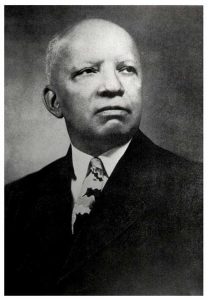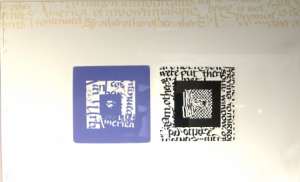African American History Month
The Leepa-Rattner Museum of Art joins with institutions across the country in honoring the generations of African Americans who have, and continue, to struggle for equality in this nation.
The origins of this month-long celebration, known today as "African-American History Month" began in 1925. Carter G. Woodson, a Harvard-trained historian, founded the Association for the Study of Negro Life and History (ASNLH) with the aim to raise awareness of African American's contributions to civilization. The group created and announced Negro History Week, first celebrated during February of 1926 on the week that sees the birthdays of both Abraham Lincoln and Frederick Douglass. Across the nation, the response was immediate and great; black history clubs began to open, teachers incorporated the educational materials into their curriculums, and progressive whites joined forces with ASNLH to endorse them and their efforts.
With the Civil Rights Movement of the 1960s, Americans across the country began to recognize and explore the importance of black history and the contributions of African Americans to our history and culture. On America's bicentennial, in 1976, President Gerald R. Ford urged Americans to "seize the opportunity to honor the too-often neglected accomplishments of black Americans in every area of endeavor throughout our history.” That year, fifty years after the first celebration, ASNLH celebrated the first African American History Month. Since then each American president has issued African American History Month proclamations. And the association—now the Association for the Study of African American Life and History (ASALH)—continues to promote the study of Black history all year.
(Excerpt from an essay by Daryl Michael Scott, Howard University, for the Association for the Study of African American Life and History)
Dr. Carter G. Woodson

John T. Scott - "I Remember Birmingham"
Artist and educator John T. Scott (b.1940 - d.2007) is one of New Orleans' most nationally renowned and respected artists. Known for his aesthetic that embodied and commemorated the spirit of New Orleans and the experience of African Americans, his work highlighted the often tragic, yet enduring and hopeful human spirit. Scott, a Xavier University art professor since 1965, was best known for large-scale abstract sculptures, but also created small-scale works, drawings, and prints.

I Remember Birmingham (1997) is artist John T. Scott's response to the Birmingham, Alabama church bombing that occurred on September 15, 1963. This hate-filled act of terrorism took the lives of four young girls that Sunday morning at the Sixteenth Street Baptist Church, just weeks after the Rev. Martin Luther King, Jr. delivered his "I Have A Dream" speech on the steps of the Lincoln Memorial. These young girls whose lives were lost, aged 10 to 14, are commemorated in Scott's series of glass blocks and relief prints. Scott emphasized that this work is "about man's inhumanity to man" and described it as a "poem to their [the young girls who lost their lives] potential. All I can do is scream in their absence for them."
Scott's series is comprised of seven architectural glass blocks etched with calligraphy and painted with images in vibrant colors. Displayed on lighted pillars, they are arranged in a T-square suggestive of both a cross and the historical architectural designs of a church with a long nave leading to the perpendicular transept. Four of the blocks in the series represent the victims. The little girls, carved into the block, seem to fly through the clear glass into shattering slashes of flames and debris. The remaining three blocks represent the Holy Trinity with two etched in flames and the third, bare of images, containing only text.
The glass blocks, placed on pedestals, are lit from within and present the viewer with a striking image reminiscent of perhaps a church window fragment, once shattered, now transformed through art. Scott himself once noted that his brilliant use of color, inspired by the rich culture of New Orleans, is designed to draw people into the piece while his elegant calligraphic poems record both his pain and hope for the future. The glass block, an artwork in itself, is used to create relief prints, two of which are on view. These more somber images create a drastic contrast to the glass block and encourage a dialogue within the space and within the viewer's heart and mind.

I Remember Birmingham was created at Graphicstudio at the University of South Florida (USF) in Tampa. The glass blocks were created in heliorelief, a photographic process developed at Graphicstudio to transfer images onto hard surfaces. Scott drew on clear Mylar sheets and transferred the images to the glass blocks, which were coated with photosensitive film. With exposure to light, those images were burned onto the blocks the way a negative is printed onto paper to make a photograph. The images transfer as black, and when the blocks are sandblasted, the clear, non-black parts are more resistant. This creates an etched effect. Four sets were created as installations and sold together. Others, like the one on view at LRMA, were created and sold as individual works.
